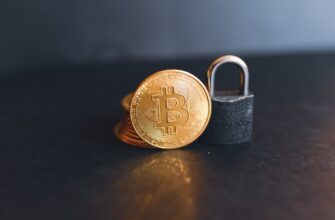- Why Every Beginner Needs a Backup Account Without KYC
- Understanding KYC and Why Skip It?
- Step-by-Step: Creating Your First Backup Account Without KYC
- Top 3 Non-KYC Backup Methods Compared
- Essential Security Practices for Non-KYC Accounts
- FAQ: Backup Accounts Without KYC Explained
- Is a non-KYC backup account legal?
- Can I recover funds if I lose my seed phrase?
- What’s the maximum I can store without KYC?
- Are non-KYC accounts more vulnerable to hacks?
- Can I convert crypto to cash without KYC?
Why Every Beginner Needs a Backup Account Without KYC
In today’s digital world, having a backup account without KYC (Know Your Customer) verification is like having a secure vault for your crypto assets. For beginners, it offers a privacy-focused alternative to traditional exchanges that require personal identification. Whether you’re safeguarding against exchange hacks, avoiding intrusive data collection, or simply maintaining financial autonomy, non-KYC backup accounts provide essential protection. This guide breaks down everything you need to know – no jargon, just clear steps.
Understanding KYC and Why Skip It?
KYC requires sharing personal documents like IDs or selfies with platforms to verify identity. While designed to prevent fraud, it creates privacy risks: data breaches, tracking, and restricted access. Non-KYC backup accounts let you:
- Maintain anonymity
- Bypass geographical restrictions
- Reduce exposure to hacking targets
- Access crypto quickly without paperwork delays
Step-by-Step: Creating Your First Backup Account Without KYC
Follow this beginner-friendly process to set up a secure non-KYC account in under 10 minutes:
- Choose a non-custodial wallet: Install Trust Wallet or MetaMask – they never ask for ID.
- Generate your seed phrase: Write down the 12-24 recovery words on paper (never digitally).
- Fund your wallet: Transfer crypto from an existing exchange or buy via decentralized platforms like Changelly.
- Enable security features: Activate PIN/biometric locks and disconnect from dApps after use.
- Test recovery: Practice restoring your wallet using the seed phrase on another device.
Top 3 Non-KYC Backup Methods Compared
- Non-Custodial Wallets (e.g., Exodus, Atomic Wallet)
Pros: Full asset control, built-in swaps
Cons: No fiat withdrawals - Decentralized Exchanges (e.g., Uniswap, PancakeSwap)
Pros: Direct token swaps, no registration
Cons: Complex for absolute beginners - P2P Marketplaces (e.g., LocalCryptos, HodlHodl)
Pros: Cash payments available
Cons: Requires careful counterparty vetting
Essential Security Practices for Non-KYC Accounts
Protect your backup account with these critical measures:
- Store seed phrases offline – use steel plates for fire/water protection
- Never share recovery keys or enter them on websites
- Use separate wallets for trading vs. long-term storage
- Verify contract addresses before transactions to avoid scams
- Enable transaction signing for all outgoing transfers
FAQ: Backup Accounts Without KYC Explained
Is a non-KYC backup account legal?
Yes, in most jurisdictions. Privacy-focused wallets comply with regulations by design since they don’t handle fiat currencies directly.
Can I recover funds if I lose my seed phrase?
No. Your seed phrase is the ONLY recovery method. Store multiple physical copies in secure locations.
What’s the maximum I can store without KYC?
No limits exist for non-custodial wallets. You control the assets, not a third party.
Are non-KYC accounts more vulnerable to hacks?
Actually less vulnerable. Without centralized databases of user data, they’re not attractive targets for mass breaches.
Can I convert crypto to cash without KYC?
Yes, via P2P platforms or Bitcoin ATMs with low limits. For larger amounts, decentralized stablecoin swaps work best.
Creating a backup account without KYC puts you in control of your digital assets. By following these steps and security practices, beginners can achieve both privacy and protection. Start small, prioritize security, and remember: your seed phrase is the master key to your financial sovereignty.








